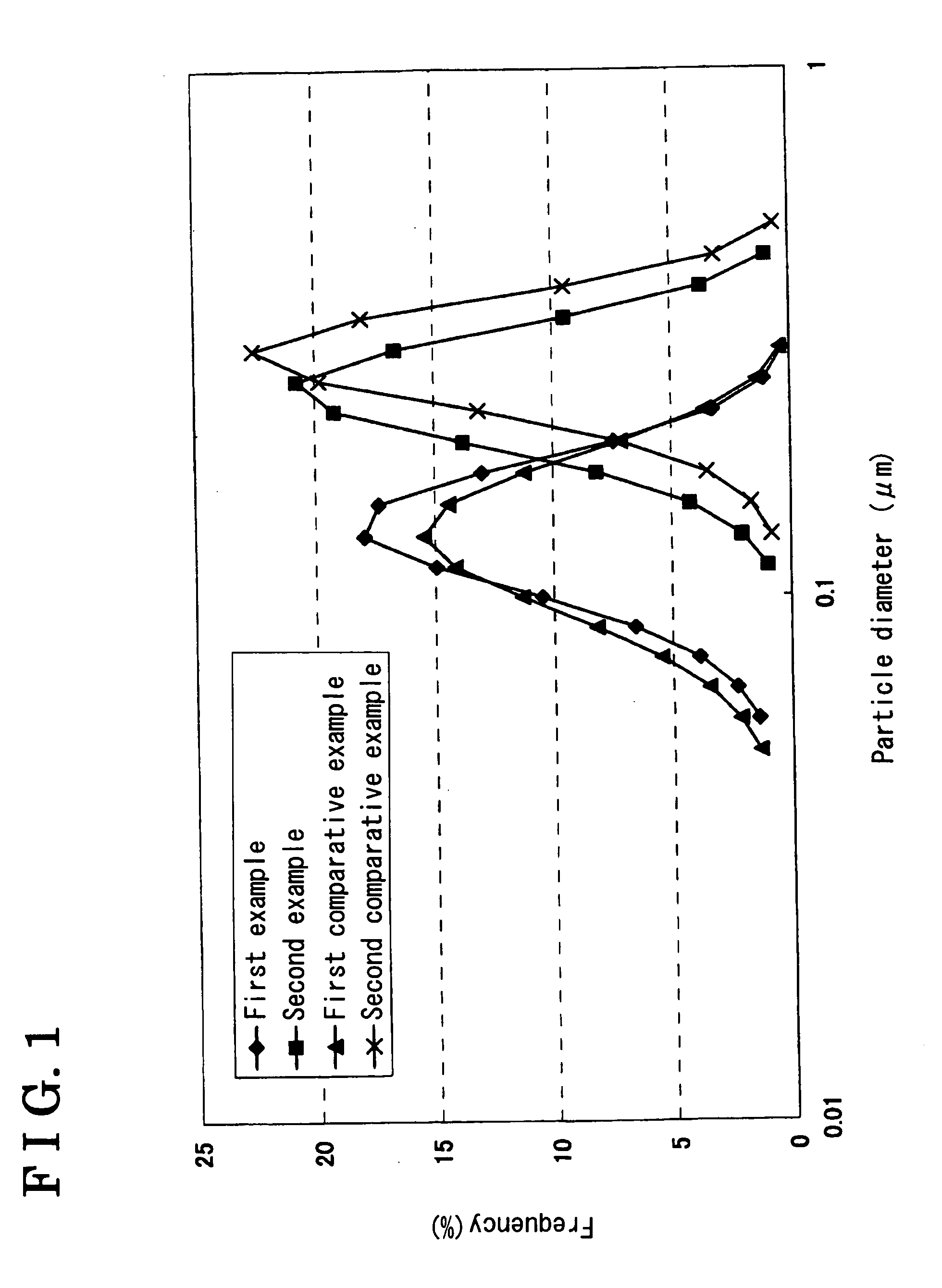Electrode for polymer electrolyte fuel cell
a fuel cell and electrolyte technology, applied in the manufacture of cell components, electrochemical generators, final product manufacturing, etc., can solve the problems of affecting the dispersing agent remaining, affecting the dispersing agent, and limited dispersion level, etc., and achieves high dispersion level
- Summary
- Abstract
- Description
- Claims
- Application Information
AI Technical Summary
Benefits of technology
Problems solved by technology
Method used
Image
Examples
first example
[0049] First, a carbon powder supporting Pt of 46% by weight (manufactured by Tanaka Kikinzoku Kogyo, T10E50E), in a weight ratio of 6.3, a polymer electrolytic solution containing an electrolyte component of 5% by weight (an ion-exchange resin solution, manufactured by Asahi Kasei, SS-900 / 05, solvent: a mixture of equivalent volume of water and ethanol, EW:900), in a weight ratio of 16.9, and ion-exchange water, in a weight ratio of 26.2, were weighed, and mixed well with a sand mill. Thus, a material paste was produced. The sand mill utilized includes a zirconia ball of 5 mm in diameter. The sand mill was operated for two hours for mixing at 15 m / s in terms of peripheral speed.
[0050] Next, a polymer electrolytic solution containing an electrolytic component of 5% by weight (ion-exchange resin solution, manufactured by Asahi Kasei Corporation, SS-1100 / 05, solvent: a mixture of equivalent volume of water and ethanol, EW:1100), in a weight ratio of 50.6, was added to the material pa...
second example
[0057] The manufacturing method was basically similar to the first example except in terms of the amounts of the two kinds of polymer electrolyte solutions added and dispersed into the catalyst paste. In the example, the materials used were the same as those used for the first example, unless specifically indicated to the contrary.
[0058] First, carbon powder supporting 46% by weight of Pt, by weight ratio of 6.3, a polymer electrolytic solution (EW:900) having 5% by weight of electrolytic component, in a weight ratio of 33.7, and ion-exchange water, in a weight ratio of 26.2, were weighed, and sufficiently mixed with the use of a sand mill. Thus, a material paste was produced. The sand mill including zirconia balls of 5 mm in a diameter was operated for a duration of two hours in conditions of 15 m / s in terms of peripheral speed.
[0059] Next, a polymer electrolytic solution (EW:1100) containing an electrolytic component of 5% by weight, in a weight ratio of 33.8, was added to the m...
PUM
 Login to View More
Login to View More Abstract
Description
Claims
Application Information
 Login to View More
Login to View More - R&D
- Intellectual Property
- Life Sciences
- Materials
- Tech Scout
- Unparalleled Data Quality
- Higher Quality Content
- 60% Fewer Hallucinations
Browse by: Latest US Patents, China's latest patents, Technical Efficacy Thesaurus, Application Domain, Technology Topic, Popular Technical Reports.
© 2025 PatSnap. All rights reserved.Legal|Privacy policy|Modern Slavery Act Transparency Statement|Sitemap|About US| Contact US: help@patsnap.com


